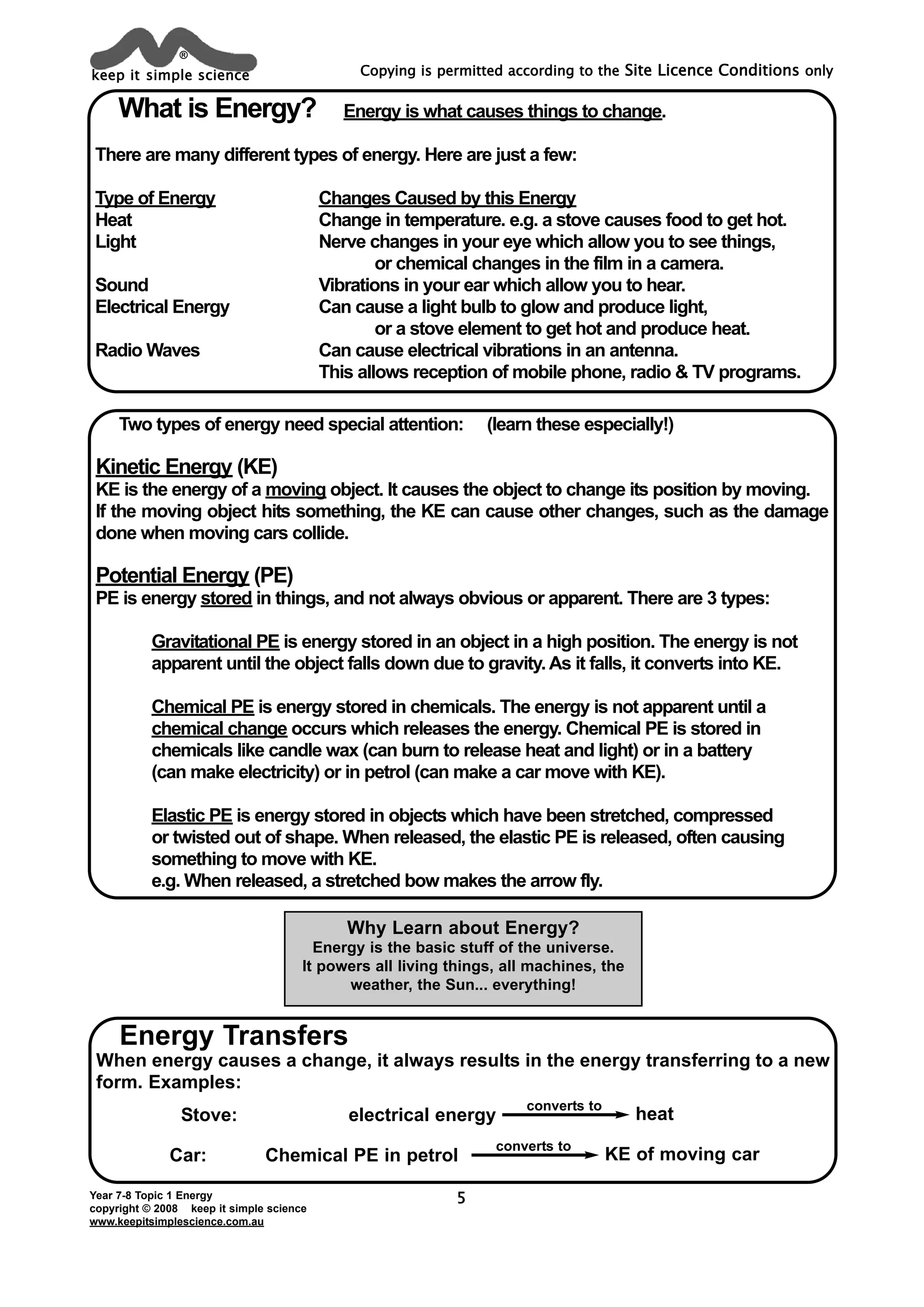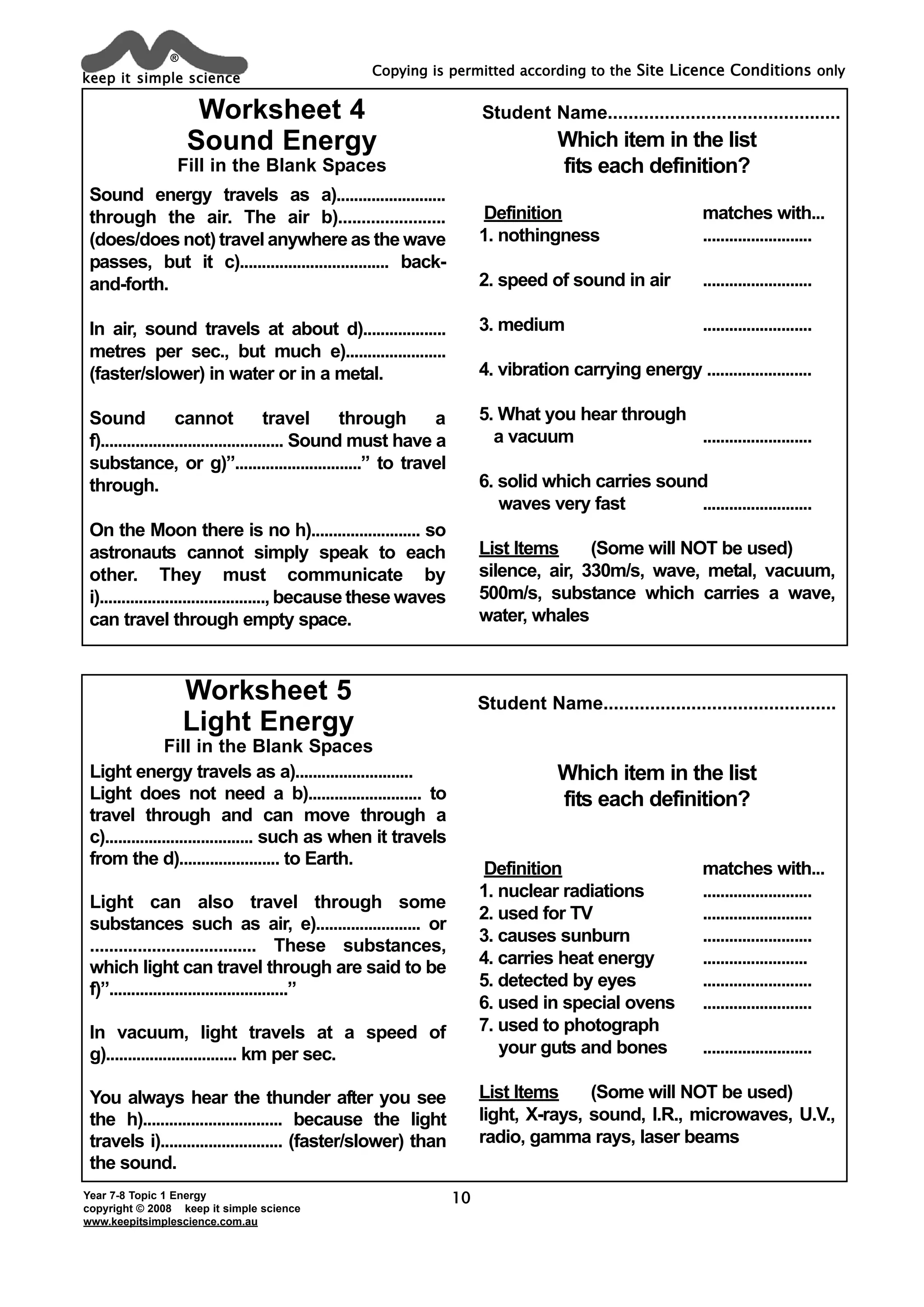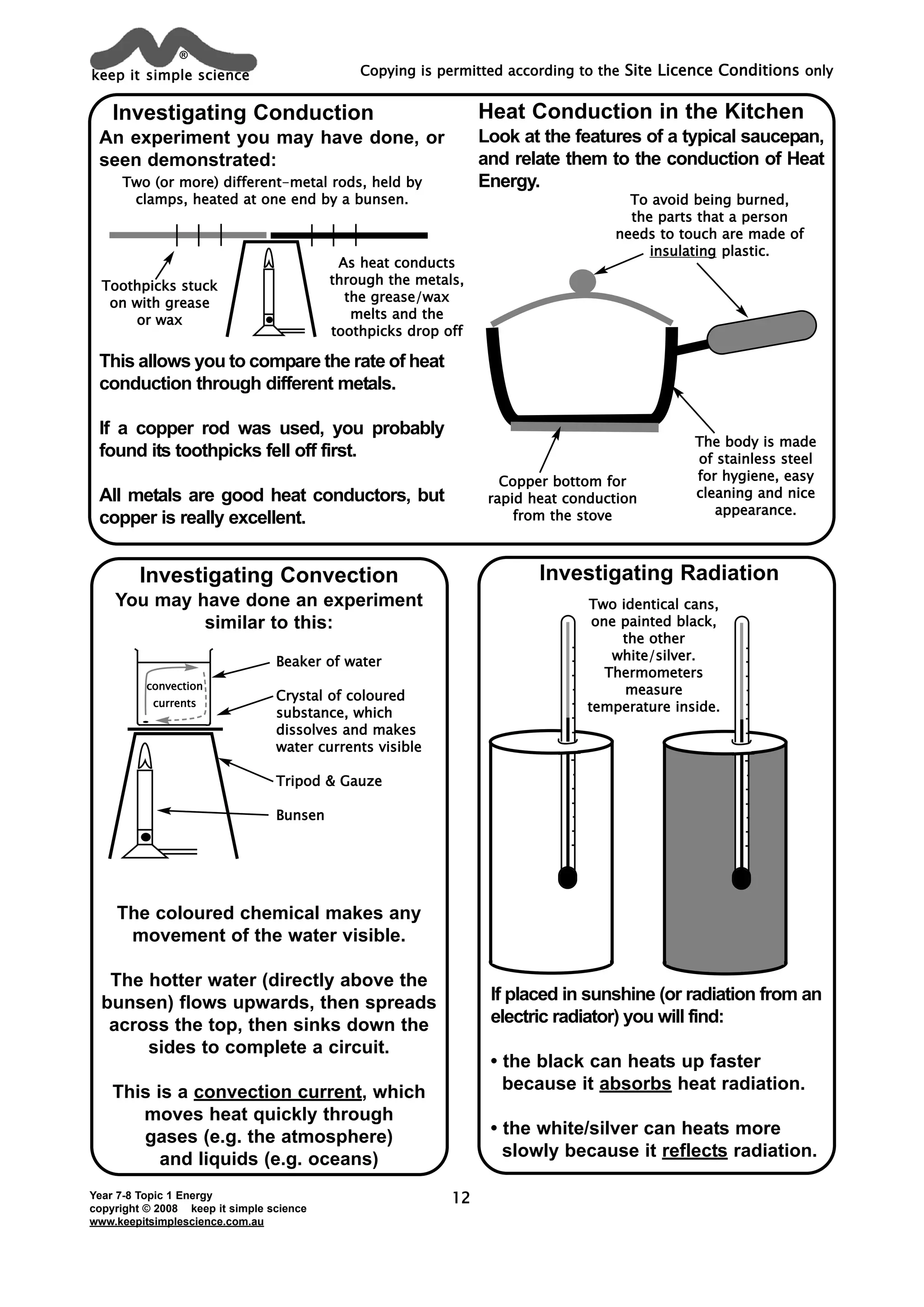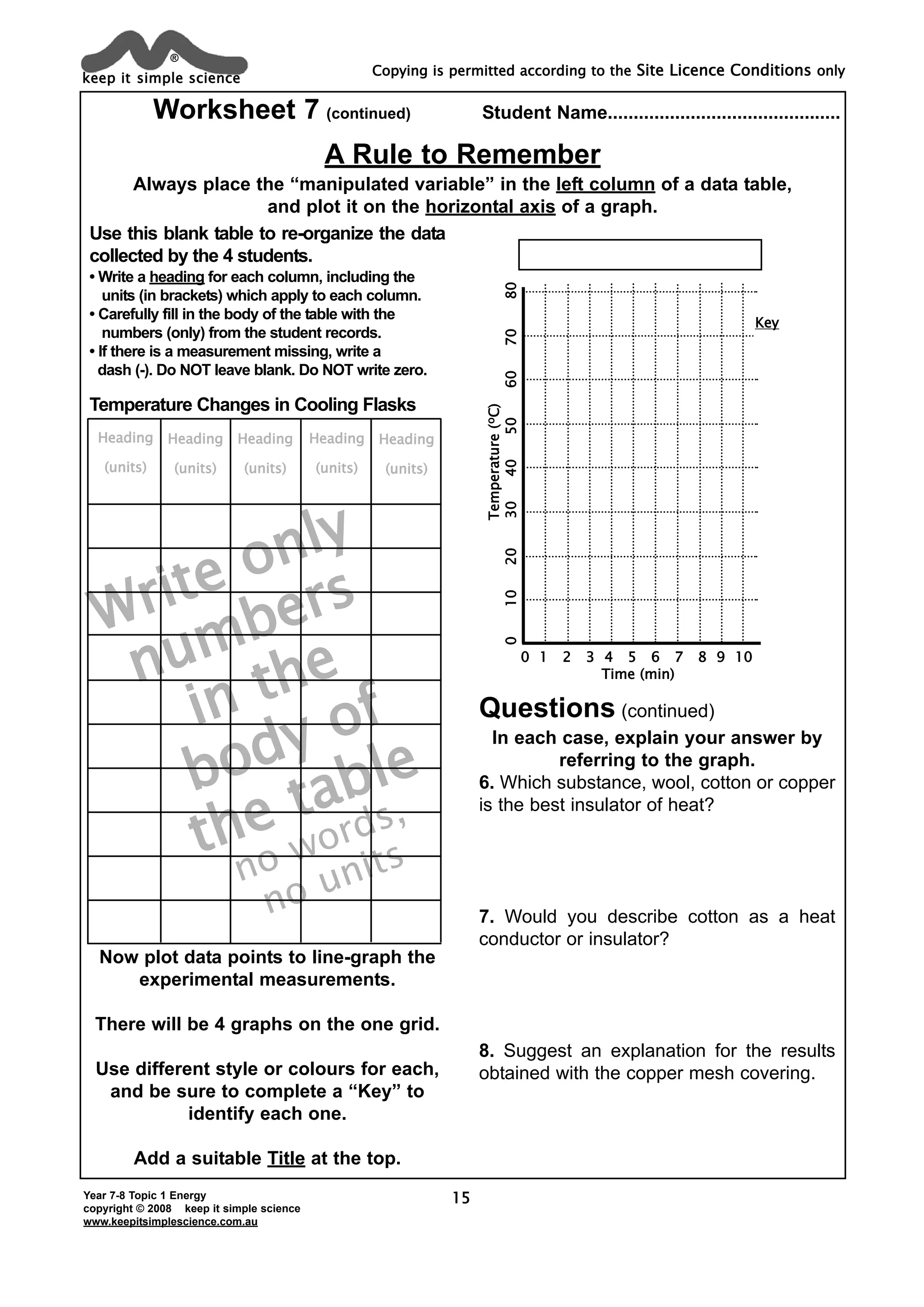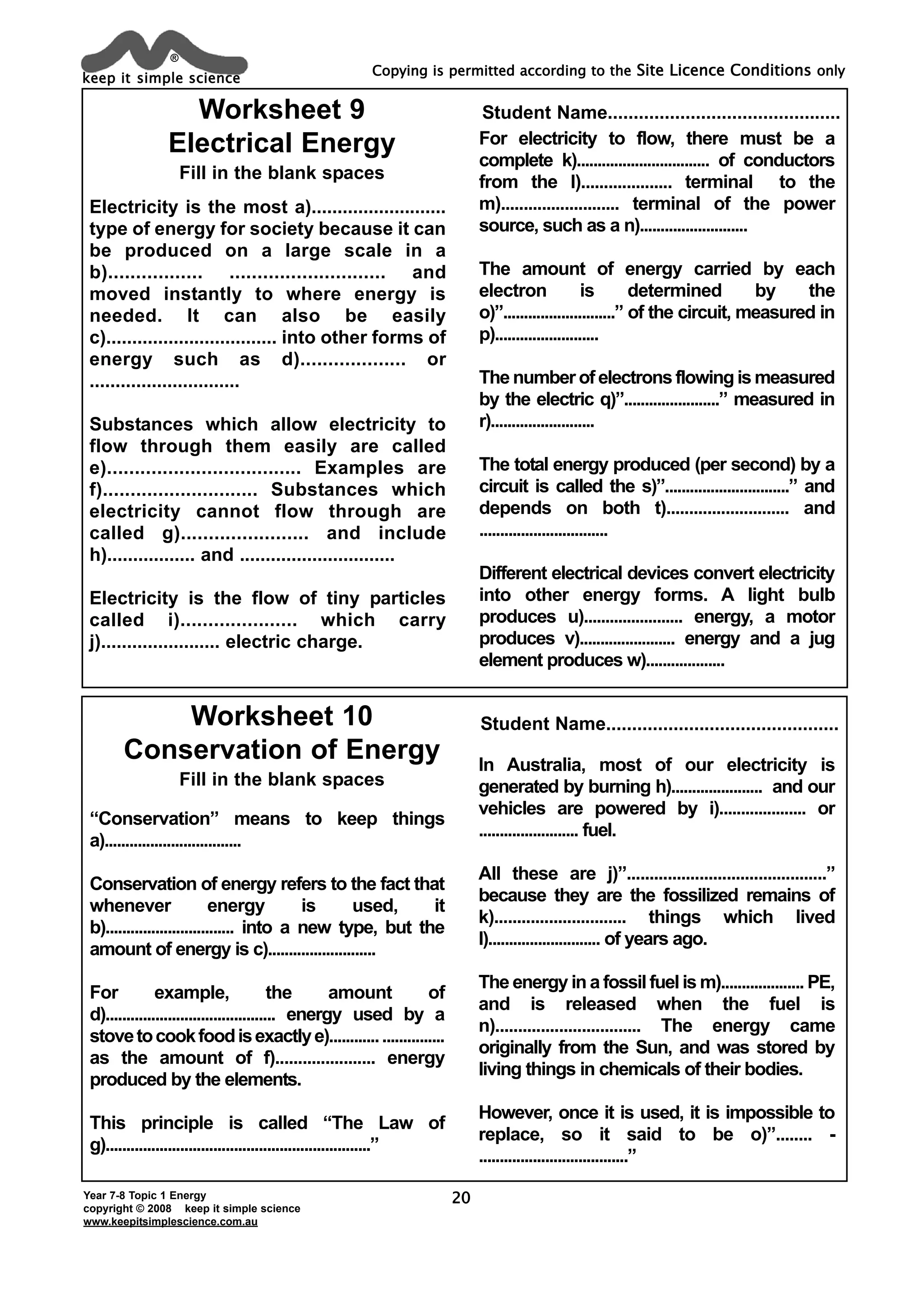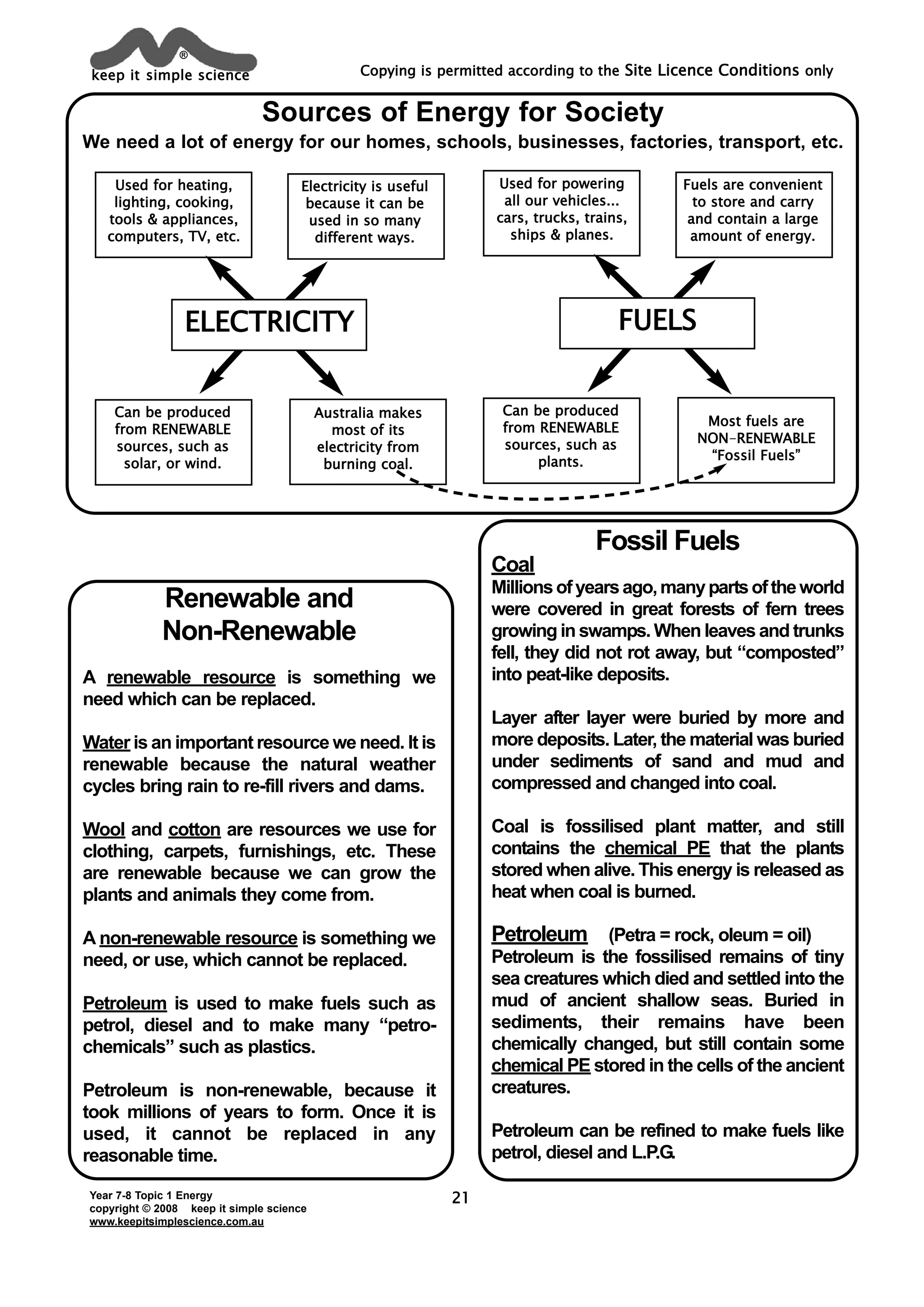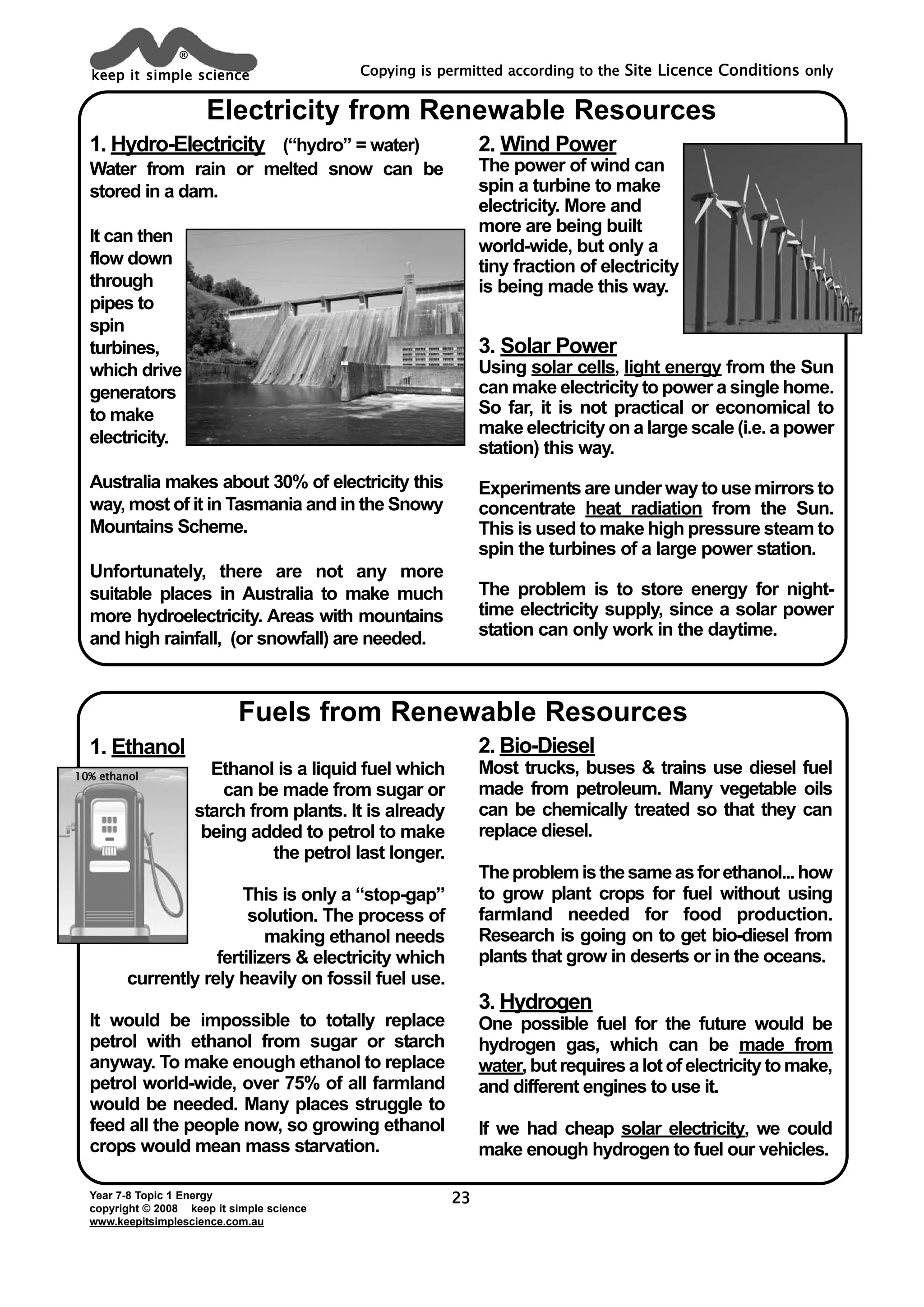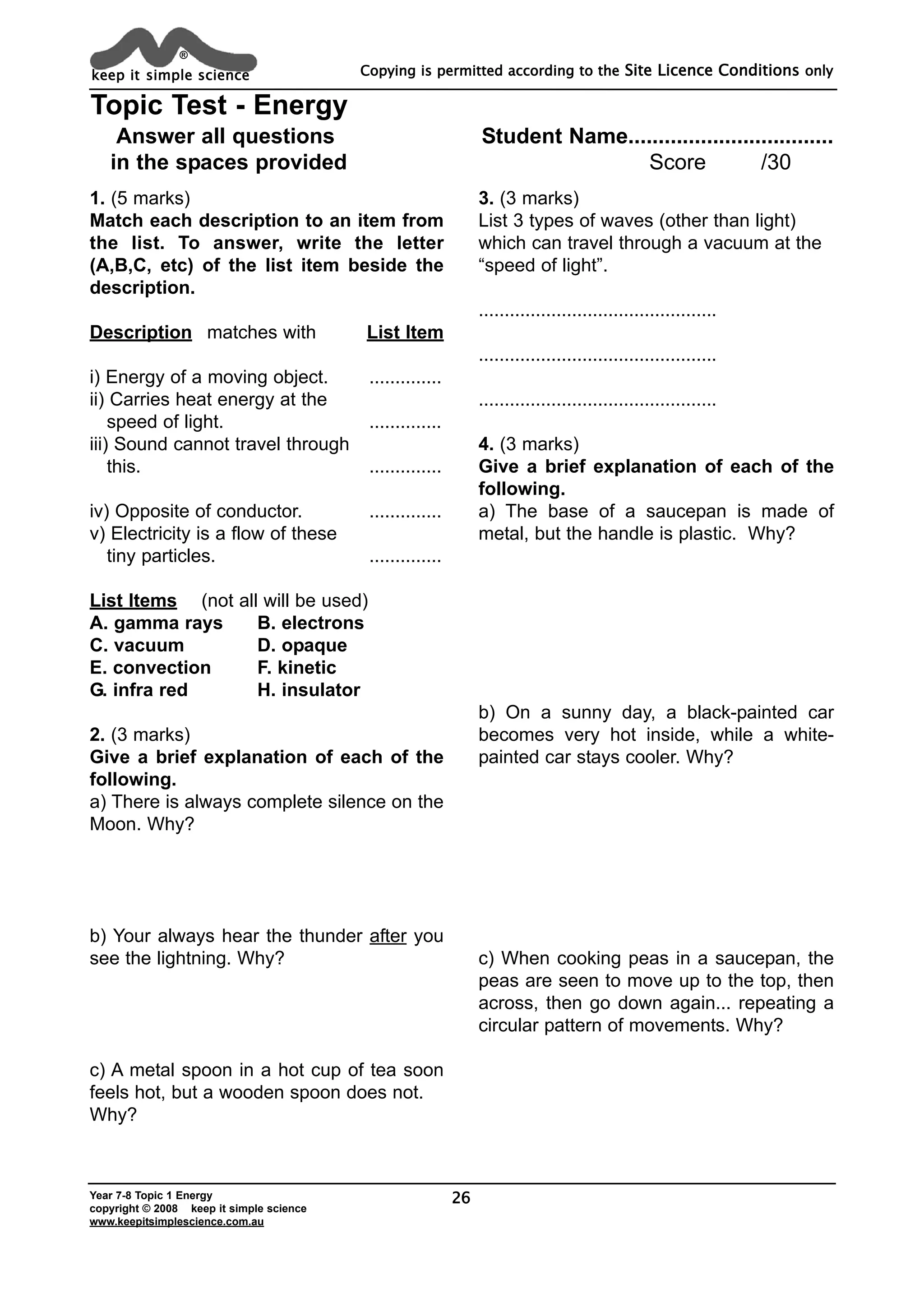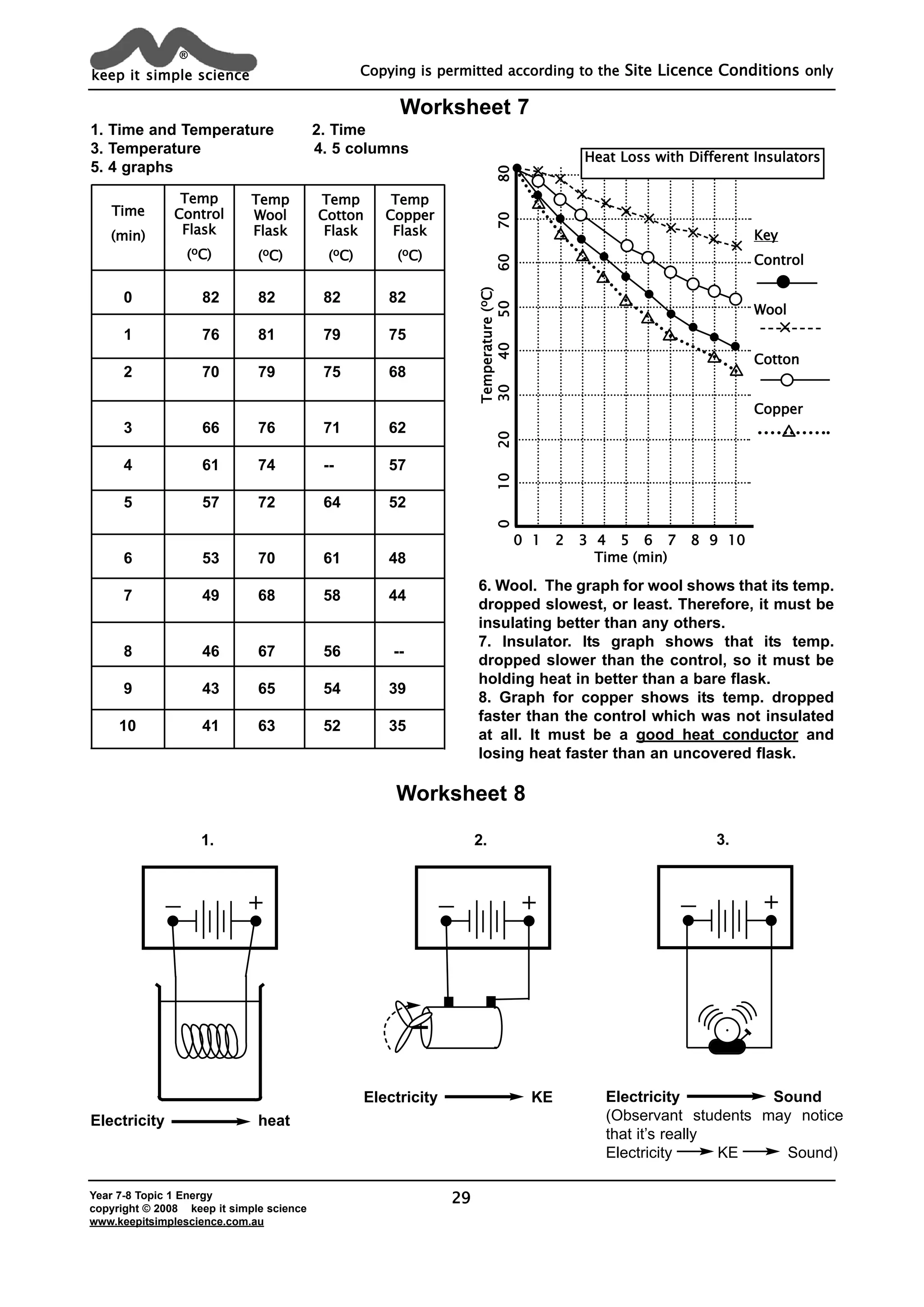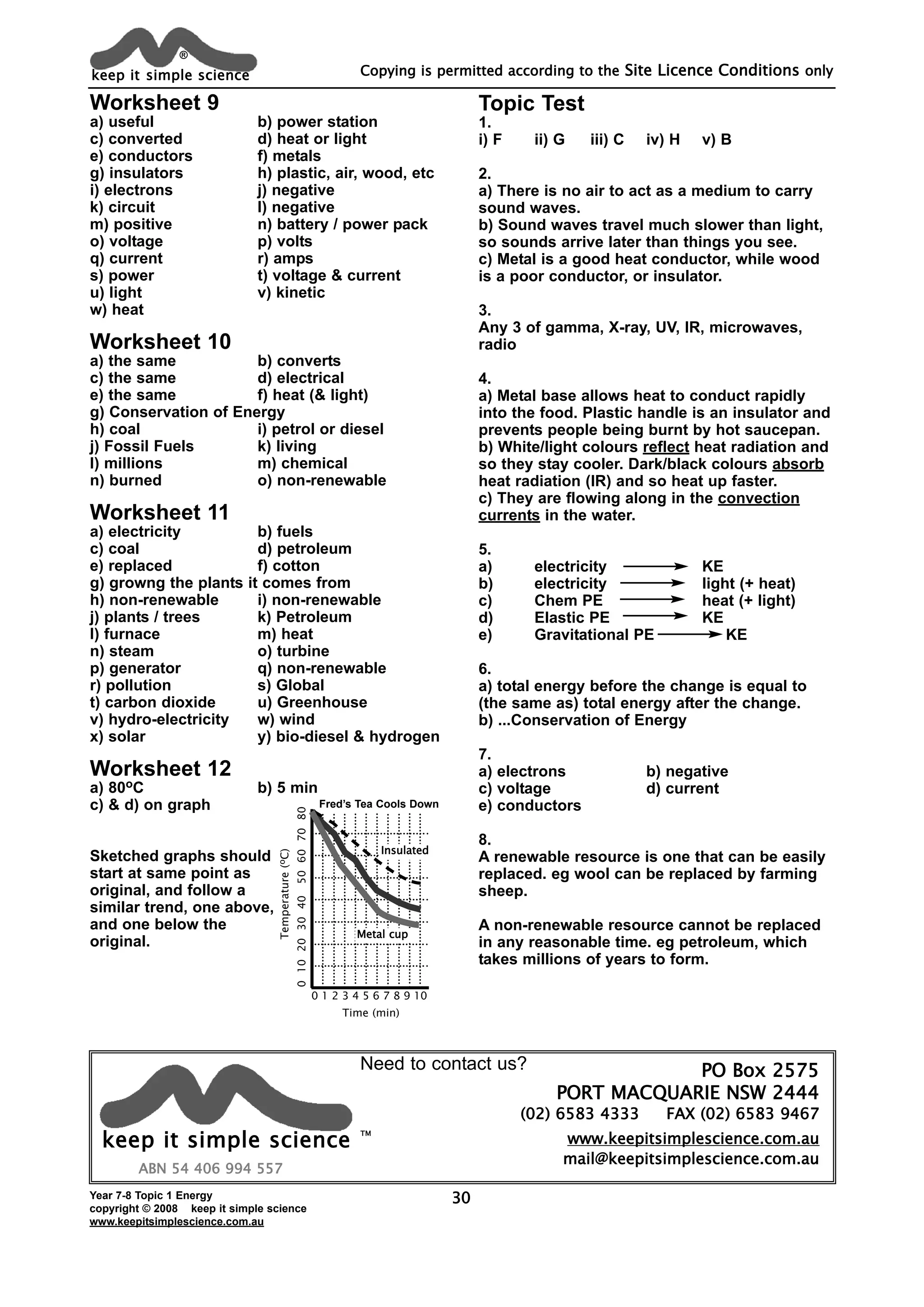This document provides information about energy and different types of energy including sound energy and light energy. It discusses how sound travels as vibrations through a medium like air at around 330 meters per second. Light can travel through space and some materials while sound requires a medium. The document also describes energy transfers and conversions between different forms of energy.




